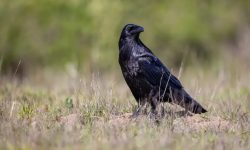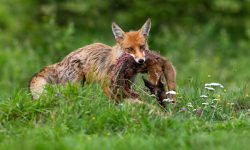Ladybugs are some of the most beloved and recognizable insects on the planet. Their bright red shells dotted with black spots have made them symbols of good luck and beauty in gardens around the world. But beyond their charming appearance, ladybugs are powerful allies to farmers and gardeners. Their voracious appetite for pests makes them one of nature’s most effective natural pest control agents.
Despite their friendly reputation, many people don’t know exactly what ladybugs eat—or how their diet changes depending on where they live and what stage of life they’re in. These tiny beetles have surprisingly diverse feeding habits that help them thrive across habitats ranging from meadows and forests to city gardens and greenhouses.
In this comprehensive guide, we’ll explore 18 foods that ladybugs love to eat, explaining how their diet helps them survive, reproduce, and contribute to a balanced ecosystem. Whether you’re curious about wild ladybugs or want to attract them to your garden naturally, understanding their dietary preferences is the key to appreciating these colorful predators.
Understanding Ladybug Feeding Habits

Ladybugs belong to the family Coccinellidae, which includes over 5,000 species worldwide. Most are predatory, feeding on soft-bodied insects that damage plants. However, not all ladybugs are carnivorous—some species feed on pollen, nectar, and even fungi.
Their diet depends largely on species, habitat, and availability of food. In general, ladybugs can be divided into two categories: predatory ladybugs, which consume other insects, and herbivorous or omnivorous ladybugs, which feed on plant-based materials like mildew and pollen.
Ladybugs also undergo four life stages—egg, larva, pupa, and adult—and their feeding habits differ at each stage. Larvae are particularly hungry, devouring pests at an astonishing rate, while adults maintain a steady diet to sustain energy for flying and reproduction.
18 Foods That Keep Ladybugs Thriving
1. Aphids
Aphids are the number one food source for most ladybug species. These small, sap-sucking insects infest plants in large numbers, making them easy prey. A single adult ladybug can eat up to 50 aphids per day, while larvae can consume hundreds over their development.
By feeding on aphids, ladybugs help protect gardens and crops naturally, reducing the need for chemical pesticides. Their efficiency in controlling aphid populations makes them one of the most valuable insects in agriculture.
2. Mealybugs
Mealybugs are another favorite meal for ladybugs. These small, cottony insects feed on plant juices and can cause severe damage to leaves, stems, and fruit. Ladybugs, particularly the Cryptolaemus montrouzieri species—known as the “mealybug destroyer”—are famous for controlling these pests.
Mealybugs secrete a sticky substance called honeydew, which also attracts ladybugs. Once they locate a colony, ladybugs consume both the insects and their eggs.
3. Scale Insects
Scale insects are tiny, armored pests that attach themselves to plants and feed on sap. Ladybugs are among their few natural predators. The Chilocorus stigma and Rhyzobius lophanthae species specialize in hunting scales, scraping them off plant surfaces and feeding on their soft bodies.
Feeding on scale insects not only sustains ladybugs but also keeps ornamental plants, fruit trees, and houseplants healthy and pest-free.
4. Whiteflies
Whiteflies are common greenhouse pests that reproduce rapidly, making them difficult to control. Fortunately, ladybugs feast on both adult and larval whiteflies. The larvae of ladybugs are especially efficient at consuming them.
By reducing whitefly populations, ladybugs protect tomatoes, cucumbers, and other vegetables from damage. Their presence in greenhouses is often a sign of a healthy, balanced ecosystem.
5. Spider Mites
Spider mites are minute arachnids that spin webs on plant leaves and suck out sap, leading to yellowing and wilting. Ladybugs are among their natural enemies, especially the Stethorus punctillum species, known as the “spider mite destroyer.”
These specialized ladybugs hunt spider mites across plant surfaces, providing effective pest control for crops, fruit trees, and indoor plants.
6. Thrips
Thrips are slender, winged insects that feed on plant tissues, causing leaves to curl and flowers to deform. Ladybugs, both larvae and adults, feed on thrips as part of their insect-based diet.
Because thrips are tiny and fast-moving, ladybugs rely on their keen senses and agile movements to catch them. In doing so, they protect flower buds and vegetable crops from severe damage.
7. Pollen
Not all ladybugs rely solely on animal prey. Pollen serves as an important supplementary food source, especially when insect populations decline. Pollen provides essential proteins and energy, supporting ladybugs during reproduction and migration.
Flowers like dill, marigolds, cosmos, and dandelions are particularly attractive to ladybugs. These plants not only feed them but also encourage them to stay and breed in the garden.
8. Nectar
In addition to pollen, ladybugs consume nectar to stay hydrated and energized. Nectar gives them quick sugar-based energy, vital for flight and mating activities.
Plants with shallow, open flowers such as alyssum and yarrow are ideal for ladybugs to access nectar easily. Providing such plants in your garden creates a natural haven for these beneficial insects.
9. Mildew and Fungi
Some ladybug species, such as the Halyzia sedecimguttata, primarily feed on mildew and fungi instead of other insects. These fungi-feeding ladybugs help control fungal growth on leaves and plant surfaces.
Their diet plays a crucial ecological role by maintaining balance in ecosystems where pest prey may be scarce but fungal growth abundant.
10. Leafhoppers
Leafhoppers are small, jumping insects that feed on plant sap and can transmit plant diseases. Ladybugs prey on both adult and nymph leafhoppers. This natural control helps prevent yellowing and wilting of plant leaves.
Their consumption of leafhoppers benefits crops such as beans, grapes, and potatoes, making ladybugs vital allies for farmers.
11. Moth Eggs
Ladybugs are opportunistic feeders, and moth eggs are another source of nourishment. Moth eggs are protein-rich and easy to consume, especially for larvae.
By eating moth eggs, ladybugs indirectly control caterpillar populations that would otherwise damage foliage, flowers, and fruit crops.
12. Ant Eggs (Occasionally)
Although ants and ladybugs often compete for food—especially aphids—ladybugs occasionally consume ant eggs if available. This behavior is rare but can occur when food is scarce.
However, ants usually protect their colonies aggressively, so ladybugs prefer avoiding direct conflict unless they find unattended eggs or larvae.
13. Soft-Bodied Caterpillars
Small, soft-bodied caterpillars are sometimes on the menu for larger ladybug species. They provide a concentrated protein source that supports egg production and growth.
While ladybugs don’t actively hunt caterpillars, they may eat weakened or newly hatched ones they encounter during feeding.
14. Beetle Larvae
Ladybugs are not above cannibalism or predation of other beetle larvae. In nature, survival is about opportunity, and when food is limited, ladybugs may consume larvae of other insects—including other ladybugs.
This behavior is especially common among larvae during early development stages when competition for food is fierce.
15. Honeydew
Honeydew is a sweet, sticky liquid secreted by aphids and mealybugs. Ladybugs often consume honeydew while hunting, gaining both hydration and carbohydrates.
The presence of honeydew on plants often indicates aphid infestations, which in turn attract ladybugs to the area. Thus, honeydew serves as both a food source and a natural signal of prey availability.
16. Plant Sap
Although rare, some ladybugs may drink plant sap directly, especially when other food is unavailable. This behavior helps them stay hydrated and maintain energy.
It is most common in environments where insect populations fluctuate seasonally, such as during dry periods or after heavy pesticide use.
17. Other Ladybugs
In the insect world, competition is fierce. Ladybug larvae, in particular, may eat eggs or smaller larvae of their own kind when food is scarce. This cannibalistic tendency ensures that only the strongest survive and reduces population pressure.
While it may sound harsh, this behavior plays a natural role in maintaining healthy population sizes within limited habitats.
18. Small Flies and Gnats
Ladybugs occasionally eat small flies and gnats they find hovering near plants. These insects are easy targets and provide quick nutrition.
Although not their preferred prey, these small flying insects supplement their diet, especially in humid environments where gnats are abundant.
How Ladybugs’ Diet Changes by Life Stage
Ladybugs undergo complete metamorphosis, and their diet shifts as they grow:
- Larval Stage: Ladybug larvae are the most voracious eaters. They consume aphids and other pests almost nonstop to fuel growth before pupation.
- Adult Stage: Adults continue feeding on insects but also include pollen, nectar, and honeydew for energy. Their broader diet supports reproduction and flight.
- Wintering Phase: During cold months, ladybugs enter diapause (a form of hibernation). They rely on fat reserves built up from nutrient-rich diets in warmer seasons.
This flexibility allows ladybugs to survive year-round, even when prey populations decline.
Why Ladybugs Are Vital for the Environment
Ladybugs are more than just garden ornaments—they are essential biological control agents. By consuming vast numbers of aphids, mealybugs, and other pests, they reduce the need for chemical insecticides that harm pollinators and soil health.
In agricultural ecosystems, releasing ladybugs is a common and eco-friendly method of pest management. Each ladybug released can save dozens of plants from pest damage, protecting yields and biodiversity.
Furthermore, by feeding on pollen and nectar, ladybugs contribute indirectly to pollination and plant health, ensuring that ecosystems remain balanced and productive.
FAQs About Ladybug Diets
What do ladybugs eat the most?
Aphids are their favorite food. Both larvae and adults can consume hundreds of aphids daily, making them powerful natural pest controllers.
Do all ladybugs eat insects?
No. While most are predatory, some species feed primarily on pollen, mildew, or plant matter. These herbivorous species are less common.
Do ladybugs eat plants?
Not typically. Healthy plants are safe around ladybugs. Only a few species, such as the Mexican bean beetle, feed on plant tissues.
What do ladybugs eat in winter?
In winter, ladybugs enter dormancy and don’t actively feed. They survive off stored fat reserves until temperatures rise again.
Can I feed ladybugs at home?
Yes. If you keep ladybugs temporarily indoors or in a garden enclosure, offer them aphids, raisins soaked in water, or small drops of honey.
How can I attract ladybugs to my garden?
Plant nectar-rich flowers like dill, fennel, marigold, and yarrow. Avoid pesticides, and maintain a healthy insect ecosystem to keep ladybugs around.
Conclusion
Ladybugs may be small, but their dietary habits make a huge impact on the natural world. From aphids and mealybugs to pollen and nectar, their wide-ranging diet sustains them through every season and helps keep ecosystems in harmony.
These tiny beetles play a vital role as nature’s pest control specialists, devouring harmful insects that would otherwise devastate gardens and crops. At the same time, their occasional feeding on pollen and nectar supports plant health and pollination.
By understanding what ladybugs eat and how they thrive, we gain insight into one of the most efficient, eco-friendly pest control systems nature has ever designed. The next time you spot a ladybug crawling across a leaf, remember—it’s not just a symbol of luck, but a hard-working protector keeping the natural world in balance.






